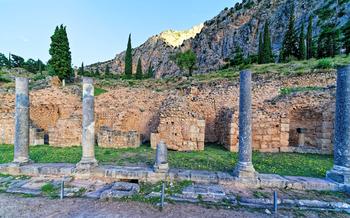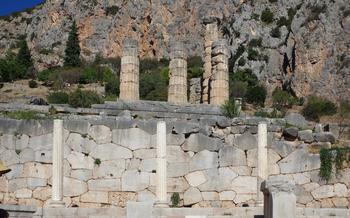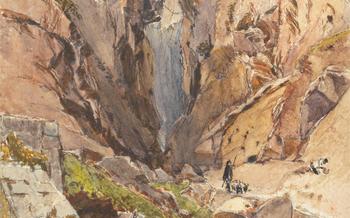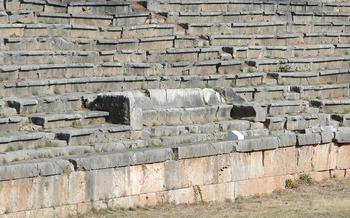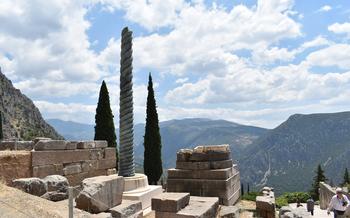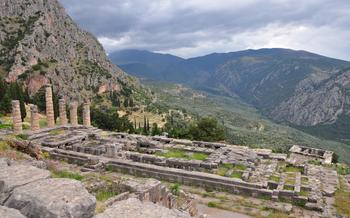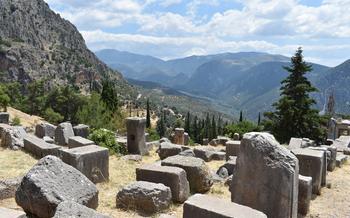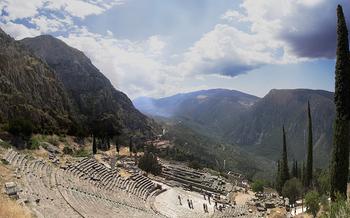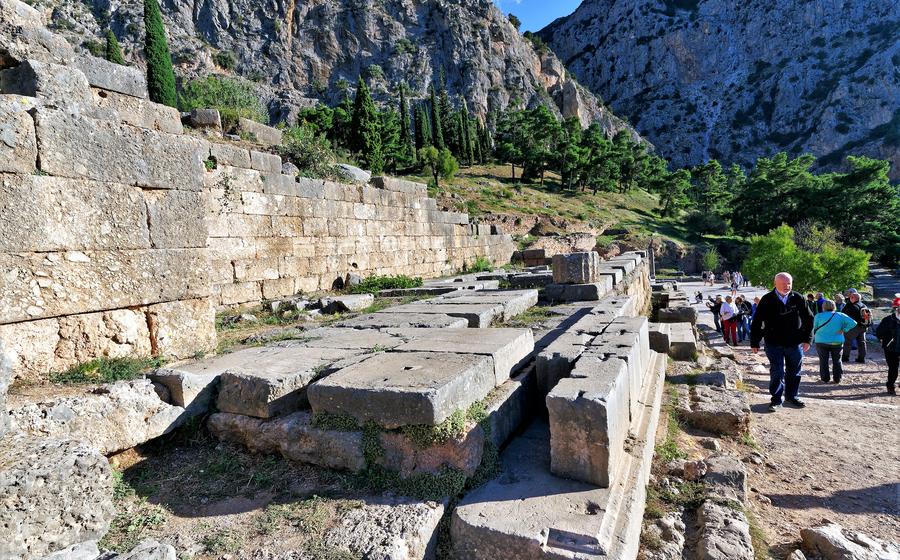
The Folklore Museum of Arahova
- The Folklore Museum of Arahova: An Overview
- Step Inside the Past: Exploring the Museum's Exhibits
- Unveiling the History of Arahova: A Journey Through Time
- Discover the Art of Woodcarving: A Local Tradition
- Traditional Costumes: A Reflection of Cultural Identity
- Embracing the Past: Reviving Local Traditions
- A Living Museum: Engaging with the Community
- The Museum's Role in Education and Outreach
- The Museum's Contribution to Tourism
- Accessibility and Facilities
- Getting to the Museum: Transportation Options
- Where to Eat and Stay: Nearby Recommendations
- Combining History with Nature: Nearby Attractions
- Insider Tip: Unveiling Hidden Gems
The Folklore Museum of Arahova: An Overview
Nestled in the heart of the picturesque town of Arahova, the Folklore Museum stands as a testament to the rich cultural heritage of the region. Established in 1962, the museum invites visitors on a journey through time, showcasing a diverse collection of artifacts and heirlooms that narrate the captivating story of Arahova's past. Its mission is to preserve and promote the town's unique traditions, customs, and craftsmanship, ensuring that future generations can appreciate and celebrate the legacy of their ancestors.
Located in a charming traditional building in the town's central square, the museum boasts an impressive architectural design that seamlessly blends with the surrounding environment. Its warm and inviting atmosphere beckons visitors to step inside and explore the fascinating world that awaits them.
Step Inside the Past: Exploring the Museum's Exhibits
The Folklore Museum of Arahova is a treasure trove of artifacts and heirlooms that paint a vivid picture of the town's rich past and vibrant traditions. As you wander through the museum's halls, you'll encounter a diverse collection of exhibits that showcase the artistry, craftsmanship, and everyday life of the Arahovians.
Traditional costumes and textiles take center stage, capturing the essence of Arahova's cultural identity. The intricate embroidery, vibrant colors, and unique designs of these garments reflect the town's deep-rooted connection to its heritage. Admire the delicate lacework, the shimmering sequins, and the intricate beading that adorn these beautiful creations.
Intricate wood carvings and handicrafts showcase the exceptional skills of local artisans. From finely carved furniture to decorative objects and religious icons, each piece is a testament to the artistry and patience of the craftsmen who created them. Discover the intricate motifs and patterns that adorn these wooden masterpieces, each one telling a story of the town's history and traditions.
Historical photographs and documents provide a glimpse into Arahova's past, capturing moments of everyday life, important events, and significant personalities. These images offer a tangible connection to the town's heritage, allowing visitors to trace its evolution over the centuries and gain insights into the lives of its people.
Unveiling the History of Arahova: A Journey Through Time
The town of Arahova traces its roots back to the 15th century when it was founded by Vlachs, nomadic shepherds from the Pindus Mountains. Initially, a small settlement, Arahova gradually grew in size and importance due to its strategic location on trade routes.
During the Ottoman occupation of Greece, Arahova became a refuge for klephts, freedom fighters who resisted Turkish rule. The town's remote location and mountainous terrain provided a safe haven for these rebels, who often used Arahova as a base for their operations.
In the 19th century, Arahova experienced a period of economic prosperity, driven by trade, livestock farming, and the production of textiles and wood carvings. This prosperity led to the construction of many fine mansions and churches, which still stand today as testaments to the town's rich past.
Arahova played a significant role in the Greek War of Independence (1821-1829). The town's residents actively participated in the struggle against the Ottomans, providing supplies and shelter to Greek fighters. In 1826, Arahova was burned to the ground by Turkish troops in retaliation for its support of the Greek cause.
Discover the Art of Woodcarving: A Local Tradition
The significance of woodcarving in Arahova
Woodcarving holds a special place in the cultural heritage of Arahova, with a rich tradition that has been passed down through generations. The town's craftsmen have mastered the art of transforming ordinary pieces of wood into intricate works of art, showcasing their exceptional skills and creativity.
Techniques and styles employed by local artisans
The woodcarvers of Arahova employ a variety of techniques to create their masterpieces. They use chisels, gouges, and other specialized tools to carve intricate patterns and designs into the wood. The most common styles include geometric motifs, floral patterns, and depictions of animals and human figures.
Evolution of woodcarving motifs and designs
Over the years, the motifs and designs used in Arahovian woodcarving have evolved to reflect changing cultural influences and artistic trends. While traditional patterns remain popular, contemporary woodcarvers are experimenting with new and innovative designs, incorporating modern elements while still honoring the town's heritage.
Contemporary woodcarvers and their contributions
Today, Arahova is home to a vibrant community of woodcarvers who continue to uphold this centuries-old tradition. Their work can be found in homes, churches, and shops throughout the town, adding a unique charm and character to the streets of Arahova.
Traditional Costumes: A Reflection of Cultural Identity
Arahova's traditional costumes stand out for their unique design and intricate craftsmanship. Each piece is a testament to the town's rich cultural heritage and serves as a symbol of identity for the local community. The costumes are adorned with vibrant colors and intricate patterns, each holding a special meaning. The colors represent the natural beauty of the region, from the deep blue of the sky to the lush green of the mountains. The patterns often depict scenes from nature, such as flowers, animals, and birds, reflecting the strong connection between the people of Arahova and their surroundings.
The costumes also hold deep symbolic meaning. The designs and motifs often represent aspects of the town's history, culture, and traditions. For example, the costumes of the women feature a distinctive apron known as a "foustani," which is elaborately embroidered with colorful flowers. The flowers symbolize fertility and abundance, reflecting the importance of agriculture in the region. The costumes of the men, on the other hand, often feature intricate braiding and decorative buttons, representing strength, courage, and virility.
The traditional costumes of Arahova are not only a symbol of cultural identity but also play a vital role in festivals and celebrations. During special occasions, such as weddings, baptisms, and religious holidays, the people of Arahova don their finest costumes, adding a vibrant splash of color to the streets. These costumes serve as a reminder of the town's rich past and the strong sense of community that binds its people together.
Preservation efforts are underway to ensure that the traditional costumes of Arahova continue to be passed down from generation to generation. Local artisans and craftspeople work tirelessly to create new costumes, using traditional techniques and materials. The Folklore Museum of Arahova also plays a crucial role in preserving and promoting the town's unique heritage by showcasing a collection of traditional costumes and textiles. Through these efforts, the costumes of Arahova remain a living tradition, embodying the town's cultural identity and providing a tangible link to its past.
Embracing the Past: Reviving Local Traditions
The Folklore Museum of Arahova is not merely a repository of history; it is an active participant in the preservation and revival of local traditions. Recognizing the importance of sustaining cultural heritage, the museum collaborates with local artisans, craftsmen, and community members to promote traditional practices. Workshops and classes are offered, providing opportunities for visitors and locals alike to learn the art of woodcarving, weaving, embroidery, and other crafts. These initiatives not only ensure the survival of these skills but also foster a renewed appreciation for the town's rich cultural legacy. The museum serves as a bridge between the past and the present, connecting generations and preserving the unique identity of Arahova.
A Living Museum: Engaging with the Community
The Folklore Museum of Arahova goes beyond mere exhibition; it acts as a gateway to the town's vibrant cultural heritage. For those seeking an immersive experience, the museum offers a range of engaging activities that bring the past to life.
Storytelling sessions with local elders provide a rare opportunity to hear tales of Arahova's history, traditions, and legends straight from the source. The museum also hosts traditional music and dance performances, allowing visitors to witness the town's rich artistic traditions firsthand.
Interactive workshops and demonstrations invite visitors to try their hand at traditional crafts, such as woodcarving or weaving, under the guidance of skilled local artisans. These hands-on experiences offer a deeper understanding of Arahova's cultural heritage and the skills that have been passed down through generations.
Gastronomic enthusiasts can indulge in culinary experiences featuring local delicacies. Cooking classes and tasting sessions introduce visitors to the flavors and techniques of Arahovian cuisine, showcasing the region's distinct culinary heritage.
The Museum's Role in Education and Outreach
The Folklore Museum of Arahova actively engages in education and outreach programs to promote cultural awareness and appreciation. Guided tours and workshops are offered for visitors, providing in-depth insights into the exhibits and the region's history. The museum collaborates with local schools and cultural institutions to develop educational programs for students of all ages, fostering an understanding of traditional crafts, local heritage, and Greek culture. Through these initiatives, the museum plays a vital role in preserving and perpetuating the rich cultural traditions of Arahova and the surrounding region.
The Museum's Contribution to Tourism
The Folklore Museum of Arahova plays a pivotal role in attracting visitors interested in history, culture, and traditional arts. By showcasing Arahova's unique heritage, the museum enhances the town's appeal as a tourist destination. Visitors from around the world come to explore the museum's exhibits, learn about the town's past, and appreciate the intricate craftsmanship of local artisans. The museum provides insights into the local way of life, making it an essential stop for anyone seeking an authentic Greek experience. Through its educational programs, guided tours, and workshops, the museum contributes to cultural awareness and appreciation, fostering a deeper understanding of Arahova's rich history and traditions among both locals and visitors.
Accessibility and Facilities
The Folklore Museum of Arahova has taken great strides to ensure accessibility for all visitors. Wheelchair ramps and elevators have been installed throughout the museum, making it easy for visitors with disabilities to navigate the exhibits. Guided tours are available in multiple languages, including English, French, German, and Spanish, allowing visitors from around the world to fully appreciate the museum's collection.
A well-stocked museum shop offers a variety of souvenirs and local products, including traditional handicrafts, textiles, and books. Visitors can also purchase postcards, magnets, and other mementos of their visit. The museum staff is friendly and multilingual, providing helpful information and assistance to visitors.
Getting to the Museum: Transportation Options
To reach the Folklore Museum of Arahova from Athens, the capital of Greece, you have several transportation options. The most convenient way is to rent a car, which allows for flexibility and the freedom to explore the surrounding area at your own pace. The drive from Athens to Arahova takes approximately two hours and thirty minutes, following the scenic National Road 4
If you prefer public transportation, you can take a bus from Athens to Delphi, which takes about three hours. From Delphi, you can catch a local bus or taxi to Arahova, which is just a short distance away. The bus journey from Delphi to Arahova takes approximately 45 minutes and offers breathtaking views of the surrounding mountains.
Once you arrive in Arahova, the Folklore Museum is conveniently located in the heart of the town, making it easily accessible on foot from most hotels and guesthouses. The museum is situated on 28th October Street, just a short stroll from the main square. If you're driving, there are several parking options available in the vicinity, including on-street parking and private parking lots.
Where to Eat and Stay: Nearby Recommendations
After a fulfilling visit to the Folklore Museum of Arahova, you may want to savor the local flavors and find a comfortable place to rest. Here are some recommendations to enhance your experience:
Restaurants:
-
To Patriko Mas: Indulge in traditional Greek cuisine with a modern twist at this family-run restaurant. Their menu features seasonal ingredients and local specialties, including mouthwatering grilled meats and fresh seafood.
-
O Tassos: Experience the rustic charm of Arahova at this cozy tavern. Their hearty dishes, such as slow-cooked lamb and homemade pies, are sure to warm your soul.
-
To Steki tou Ilia: For a taste of authentic Greek meze, head to this lively taverna. Their selection of small plates, including grilled octopus, stuffed vine leaves, and fried zucchini balls, is perfect for sharing and sampling the local flavors.
Accommodation:
-
Arachova Inn: Located just a stone's throw from the museum, this charming hotel offers cozy rooms with stunning mountain views. Their warm hospitality and traditional Greek breakfast will make you feel right at home.
-
Parnassos Hotel: If you seek a more luxurious stay, consider Parnassos Hotel. Its elegant rooms and suites provide a haven of tranquility, while the rooftop terrace offers breathtaking views of the surrounding mountains.
-
Mple Studios: For budget-conscious travelers, Mple Studios provides comfortable and affordable accommodations. Their self-catering studios are ideal for those seeking independence and flexibility.
Tips:
-
To avoid the crowds and enjoy a more authentic experience, consider visiting Arahova during the shoulder seasons (spring and autumn).
-
Make reservations in advance, especially during peak tourist season, to secure your preferred restaurant and accommodation.
-
Don't miss the opportunity to try local delicacies such as formaela (a type of cheese pie), loukaniko (a spicy sausage), and galaktoboureko (a custard-filled pastry).
-
Explore the town's charming alleys and shops to discover unique souvenirs and handmade crafts, including intricate wood carvings and traditional textiles.
Combining History with Nature: Nearby Attractions
Beyond the captivating history showcased within the Folklore Museum of Arahova, visitors can embark on a journey to explore the region's natural wonders. Just a short drive away lies the renowned Delphi Archaeological Site, a UNESCO World Heritage Site, where ancient ruins and stunning views await. Delve into the history of the Oracle of Delphi and witness the well-preserved remains of the Temple of Apollo.
Venture into the picturesque mountain villages of Parnassos, nestled amidst lush forests and majestic peaks. Discover traditional architecture, charming cafes, and panoramic views that will take your breath away. Embrace your adventurous side with hiking trails that wind through breathtaking landscapes, offering opportunities to connect with nature and capture unforgettable moments.
For those seeking a rejuvenating experience, indulge in the thermal springs of the region. Relax and unwind in the naturally heated waters while surrounded by serene scenery. Whether you prefer a leisurely stroll, an exhilarating hike, or a soothing spa day, the surroundings of Arahova offer a harmonious blend of history and nature, ensuring a truly memorable experience.
Insider Tip: Unveiling Hidden Gems
Beyond the main exhibits, the Folklore Museum of Arahova holds hidden treasures waiting to be discovered. Venture into the lesser-known corners of the museum to find unique artifacts and stories that may have been overlooked. Explore the surrounding alleys, where traditional shops and workshops line the narrow streets, offering a glimpse into the town's rich craftsmanship.
To fully immerse yourself in Arahova's vibrant culture, attend local festivals and events. These celebrations provide an opportunity to witness traditional music, dance, and costumes firsthand. Don't hesitate to engage with the locals; they are proud of their heritage and eager to share their stories. Seek recommendations from museum staff or local residents to uncover hidden gems and create a truly memorable experience.
